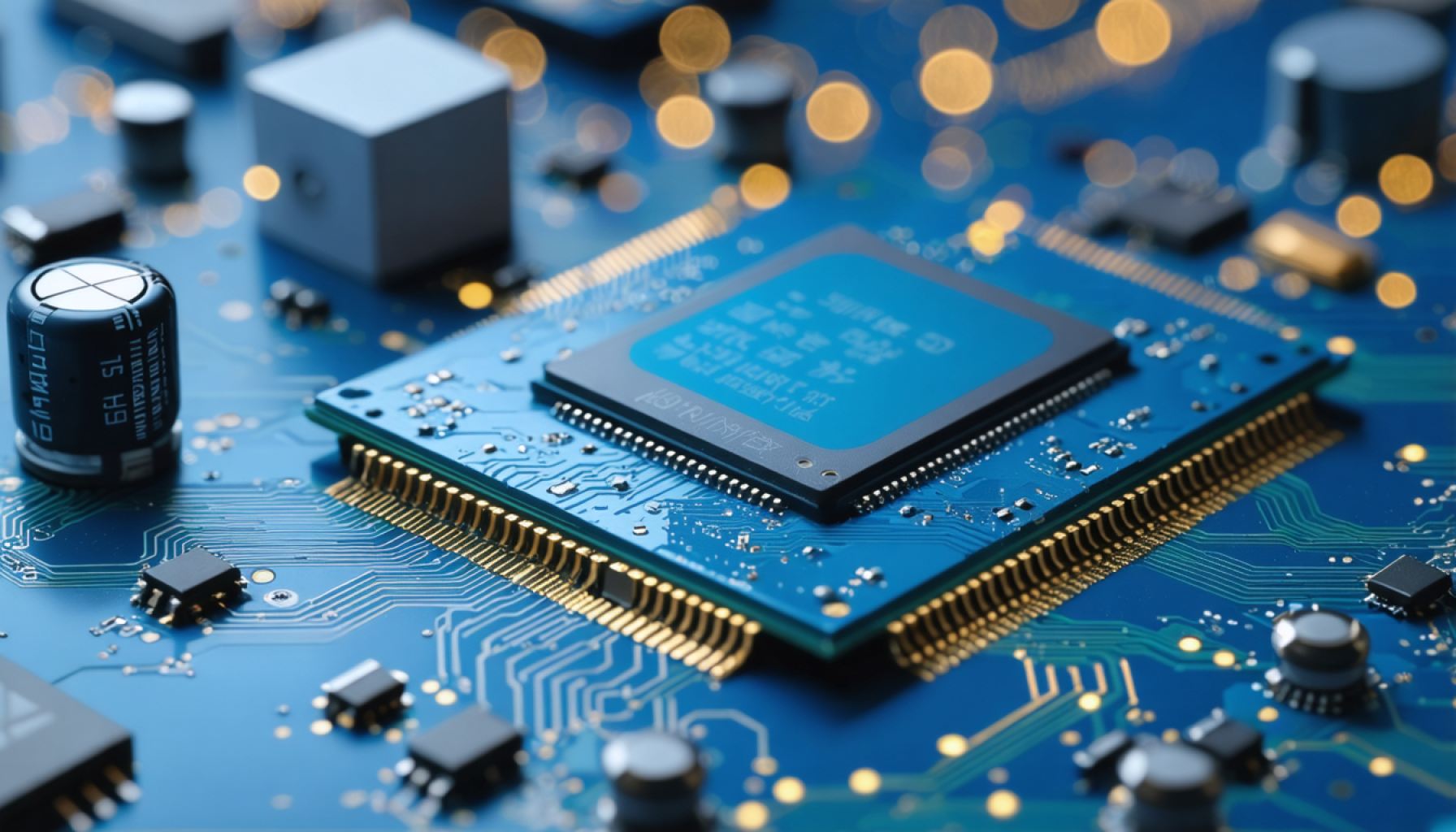- Huawei is set to revolutionize the AI hardware market with its new Ascend 910D chip, challenging Nvidia’s stronghold, particularly the H100 series.
- The Ascend 910D represents a strategic effort by Huawei to enhance China’s tech sovereignty amid U.S.-imposed export restrictions.
- Huawei is collaborating with Chinese partners to test and advance this revolutionary AI chip technology.
- This technological move, amid heightened geopolitical tensions, highlights a push for independence from Western technology dependencies.
- The Ascend 910D chip symbolizes Huawei’s commitment to reclaiming control over its technological narrative and could spark broader transformations in China’s tech ecosystem.
- The development of the Ascend 910D paves the way for significant advancements in processing capabilities and data handling efficiency.
In the fast-evolving world of artificial intelligence, one Chinese giant prepares to disrupt the status quo. Huawei, a titan in telecommunication and technology, is meticulously crafting a new cornerstone in AI hardware: the Ascend 910D chip. This isn’t just a chip; it’s a calculated strike aimed at Nvidia’s dominance, specifically targeting the acclaimed H100 series utilized for training AI models.
But what makes this development so riveting? Imagine a silicon battlefield where each processor is a foot soldier armed with the capability to process massive volumes of data, faster and more efficiently than ever. Huawei is calling on Chinese allies, assembling an army of test partners, each contributing to a collective push for tech sovereignty. The stakes are high, as is the ambition: they intend to carve a piece of the AI chip market, one that has been largely untouchable due to U.S.-led export restrictions.
The geopolitical tension surrounding AI chips adds a layer of intrigue. Just weeks ago, as the U.S. dialed up chip export restrictions with surgical precision, Huawei seized the opportunity to fill the impending void in the market. The company’s success could spell a turning point for China’s tech ecosystem, potentially igniting a spark of independence from Western technology.
The Ascend 910D isn’t merely a rival; it’s a symbol, a statement against the narrative of dependency on foreign technology. In crafting this microcosmic powerhouse, Huawei isn’t just creating a chip; they are manufacturing a future where Chinese firms not only innovate on par with global giants but also reclaim control over their technological narratives.
This endeavor carries the torch of ambition and resilience—a testament to human ingenuity in the face of geopolitical adversity. As Huawei aligns its vision with the innovations of tomorrow, the world watches with bated breath. Will the Ascend 910D rise as a beacon of change, or become just another note in the annals of tech history? One thing is certain—the race to redefine AI hardware has never been more thrilling.
Is Huawei’s Ascend 910D Poised to Topple Nvidia’s AI Chip Dominance?
Introduction
The technological battlefield is heating up as Huawei prepares to launch its Ascend 910D chip, setting the stage for intense competition with Nvidia’s leading H100 series. The geopolitical landscape and U.S. export restrictions add layers of complexity and intrigue to this saga. Let’s dive deeper into the implications and potential impacts of this development.
Features and Specifications of the Ascend 910D
Huawei’s Ascend 910D is designed to be a powerhouse in AI processing. Although detailed specifications are still emerging, it is expected to match or exceed the capabilities of Nvidia’s H100 in key areas:
– Processing Power: Huawei aims for the Ascend 910D to offer unparalleled speed and efficiency, focusing on high throughput and low latency to excel in AI model training.
– Energy Efficiency: Reducing power consumption without compromising performance is a primary goal, making it more sustainable and cost-effective for large-scale deployments.
– Scalability and Compatibility: Designed to seamlessly integrate into existing systems and scale up with growing demands, offering more flexibility for tech companies.
Real-World Use Cases
The Ascend 910D is poised to revolutionize various industries:
– Healthcare: Accelerating AI-driven diagnostics and personalized medicine.
– Finance: Enhancing predictive analytics for better risk management and fraud detection.
– Manufacturing: Optimizing production lines with real-time data analytics.
Market Trends and Industry Forecasts
The global AI chip market is booming, projected to reach $83.2 billion by 2027 (Markets and Markets report). Huawei’s entry could significantly alter market dynamics:
– Increased Competition: Price wars and rapid innovation as Huawei challenges established players like Nvidia and AMD.
– Shift in Supply Chains: Potential reduction in dependency on Western technology, especially within China and allied regions.
Controversies and Limitations
While promising, the Ascend 910D faces several challenges:
– Export Restrictions: Continued U.S. restrictions may hamper Huawei’s access to critical technologies and markets.
– Intellectual Property Disputes: Potential IP issues arising as Huawei expands its footprint in the AI chip space.
– Market Adoption: Convincing global players to transition from Nvidia to Huawei will require clear advantages and robust support.
Security and Sustainability
Huawei emphasizes security in the Ascend 910D’s architecture, ensuring robust protection against cyber threats. Sustainability is integral, with advancements in reducing energy consumption aligning with global environmental goals.
Comparative Analysis: Ascend 910D vs. Nvidia H100
| Feature | Ascend 910D | Nvidia H100 |
|———|————-|————-|
| Processing Efficiency | High | High |
| Energy Consumption | Lower | Moderate |
| Scalability | High | High |
| Cost | Competitive | Premium |
Actionable Recommendations
For tech companies considering Huawei’s Ascend 910D:
– Assess Compatibility: Ensure existing infrastructure can support Huawei’s hardware.
– Conduct Pilot Testing: Start with small-scale deployments to gauge performance benefits.
– Monitor Regulatory Changes: Stay updated on geopolitical developments affecting tech trade.
Conclusion
Huawei’s Ascend 910D represents more than just a technological advancement; it’s a pivotal moment in the AI chip arena that could reshape global tech dynamics. Whether it will dethrone Nvidia remains to be seen, but one thing is clear—the competition will drive innovation to new heights.
For more information on Huawei’s innovations and insights, visit the official Huawei website.
